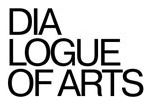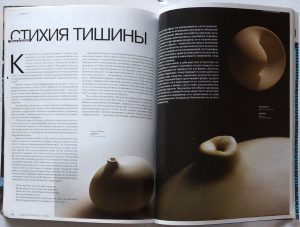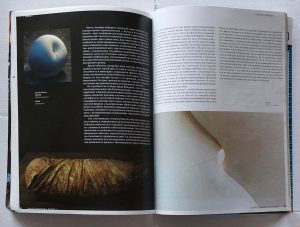The element of silence



How do you signify the ability to see in the circles diverging on the water, the stone sinking into the depths? In the swaying stems, the power of the wind? Through the lines of a read letter, discern the eye expression of the writer? To see the essence of each event, to know the cause of the incident and foresee its outcome, bearing in mind that events occur in their inseparable integrity of embodiments and inner contents, intentions and consequences?
Sergey Sobolev creates works in which the accuracy of such correspondences is identical to the form he embodies: the form becomes the attire of the idea and the idea becomes the explicit content of the form. The artist gives his ideas a certain receptacle, which turns out to be a true match, proportionality, congruence to the meanings put into them.
The full measure of the concept precisely matches the embodied volume, which is neither meagre nor excessive, but organic to its content. The beginning of the creation of a new work is the search for the identity of the two components, the possibility of their complete coincidence.
Sergey Sobolev’s objects find their integrity in the absence of gaps, reticences or hints, unfolding with precision of concept and purity of embodiment. At the same time they don’t offer an obvious interpretation, creating a complex wholeness and reflecting the metaphorical multi-dimensionality of the ideas expressed.
One of his works, “Cocoon”, is an image of a tightly swaddled baby, completely hidden from our view. The folds of the fabric make the child invisible to the outside world. A newborn human being remains a mystery to us for a long time, a secret of an undisclosed soul. Likewise, a fleeting thought or an idea doesn’t manifest itself immediately. The moment we are experiencing has the seeds of a future that is not yet known.
Starting from the impression, the artist translates the image of the event into a reason and a way of making sense of the world, pointing out that everything that happens to us can provide answers about ourselves and our lives. Speaking of this work, the artist unfolds the image of “the unknown within, the unknown outside, the unknown everywhere” and then as if to reveal the underside of M. Montaigne’s thought, that the true mirror of our way of thinking is our life:
He doesn’t know us and what awaits him ahead.
We do not know him and what awaits us ahead.
No one knows what the familiarity turns out to be.
Everyone awaits the unknown.
But everyone only imagines what they are
Our visions and expectations are what we are.
The reason for the attraction to the metaphorical density of the works may be the presence of a sensitive inner vision, caused by the perception of the incompleteness of the visible reality. Suspicions of this incompleteness probably appeared at the very first human attempts to comprehend reality. In the 4th century B.C. Plato formulated what had previously existed as an intuition: what is true is not that changeable reality which is open to our sight, but another – invisible, constant, anticipated in perfect forms, visible only to the spirit. Incomparable whiteness, perfect harmony, supreme justice… These invisible and open to the mind entities Plato called Forms, that is, eternal patterns for the visible. This is how he showed us that the mind sees more clearly than the eye (as Ortega y Gasset said so well in “Two Great Metaphors”).
Philosophers still denote the presence of the invisible in the visible. Among them is Jacques Lacan, who believes that art introduces the invisible into the image, thereby leading us to the birth and ontology of form. Among them is Georges Didi-Huberman, who invites us to close our eyes in order to see the invisible. He argues that it is the invisible that gives an object of art mobility – shimmering, pulsating, the simultaneous presence and absence of an image, its emergence and disappearance, its constant slipping away from the momentary present, revealing ever new layers of meaning. These qualities are inherent in Sergey Sobolev’s sculptures: polysemantic, elusiveness of form which varies through changes in perspective and light touches. These properties are evidence of explicit interactions between object and space, of their multiple correlations. In fact the form remains unchanged and its transformations are illusory. In the description of one of his works (“Vessel”), the author notes the constancy of form and variability of content, comparing the vessel to a man:
“What is it like, how much can it hold and whether it feels the need to do it? The anatomy of a vessel indicates its character and capacity. An example of how the form, the shell, determines the content”. The author gives another example in his works, when, on the contrary, the content determines the ontology of form. It is as if the idea animates the form, giving it the breath of life. This forces both the form and the context to change: lines and volumes, light and shadows, interact and refract space. Thus, the object itself signifies the context, which can also be inconstant and prone to shrink or grow, either by existing only implicitly, or by reaching to infinity, to the Absolute of the Unknown.
The author’s color choice for his objects is predominantly achromatic – white and shades of gray. White is a color appealing directly to archetypes and associations, the color of purity and harmony, of milk, the first blossom, the beginning of life, the light itself. For sculpture it is the essential feature, where the surface doesn’t seem to be detached from the air but becomes transparent, merging with the light, flowing into it, while retaining its own outlines, its own borders- stitches. These works, filled with inner radiance, immediately manifest themselves, giving precise and emblematic information. They imprint in the mind and initiate an independent inner dialogue, without disappearing from the field of inner vision.
Other objects, on the other hand, are barely visible. What makes them almost invisible is their gray color. This is their capacity for mimicry, the invisibility of their presence. Here again we are reminded of Didi-Huberman and his book “What We See Looks Back at Us”, showing the viewer captured by the visual. This idea of “Ryazan pies with eyes” suggests a kind of inner life of the material object.
It is no coincidence that both Georges Didi-Huberman and contemporary art theorists (Rosalind Krauss, for example) often refer to biological connotations: pulsation, heartbeats, ocean tides, days and nights. It is probably no coincidence that Sergei Sobolev often refers to anthropomorphic themes and prefers elongated and elastic forms with delineated outlines, which makes his works resemble images of nature. Sobolev’s sculptures become frozen moments of existence, with their inner vibrations and tangible, exuding energy.
The sculptor’s special challenge is to portray the indistinguishable and complete identity of the ideal and the real. His works can open up as a way of comprehending the world order, its immutable laws and regularities, hidden from our view, but invisibly present, as if poured into this world together with the light playing on the surfaces of forms. The artist perceives invisible, dissolved in every day complex interactions, connections concentrated in the experienced moment, embracing the already happened, the possible, the potential, the probable. This property makes Sergey Sobolev’s sculptures full of inner power, open to interconnections. The truth the artist seeks is constant but not static, on the contrary, it is in permanent motion, as if permeated with the breath of life. That is probably why his works, with their tendency to changes and space transformation (but also their inner permanence), with their ability to subtly interact with light are so exhilarating. Yet, like Plato’s Forms, they are devoid of sensuality, calm, pure and perfect. Like silence, with its visible and invisible depth of meaning, with its exhaustive fullness. Like silence, always connected to the sound that precedes it or expects it. Like a secret that reveals itself only to those who manage to keep it.
Julia Kulpina
